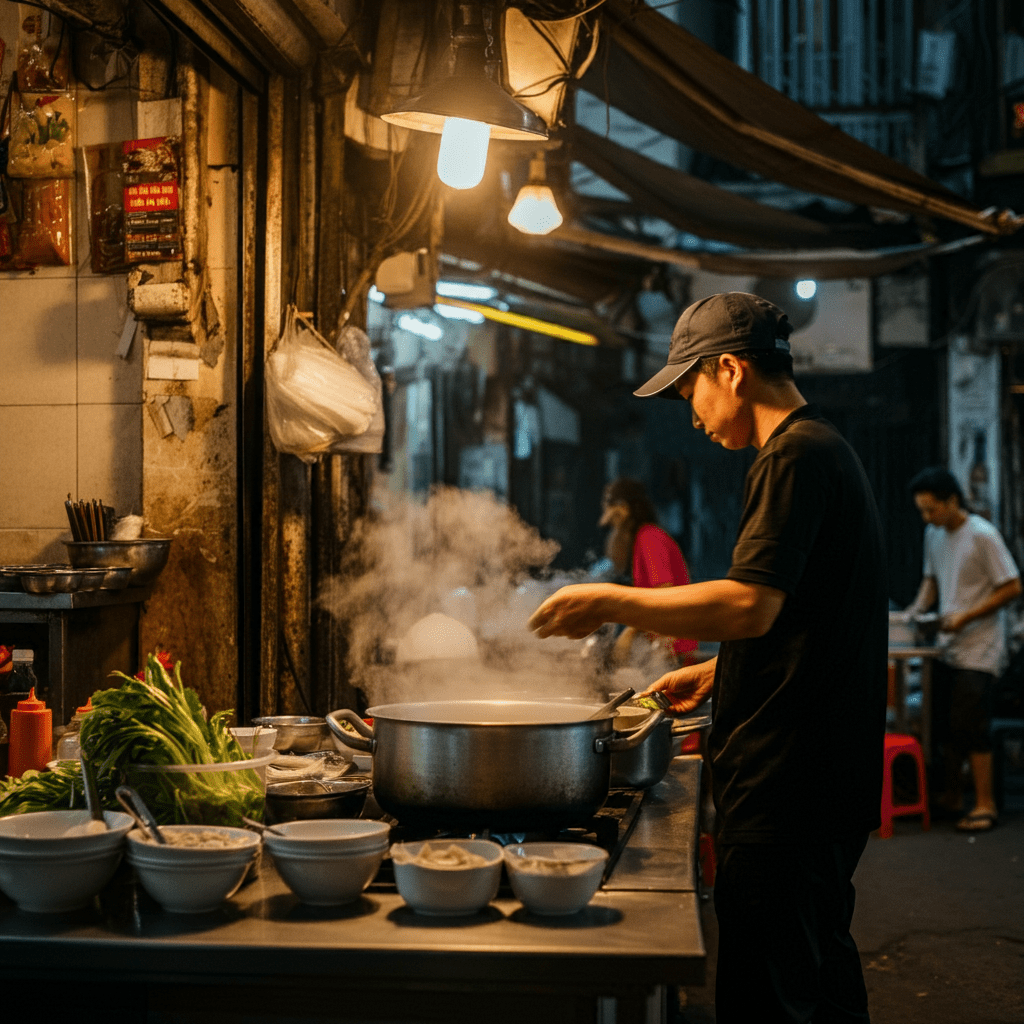Exploring the Roots and Rise of Vietnamese Iconic Pho
- Vespa Adventures
- Oct 3, 2024
- 3 min read
Updated: Mar 20
Pho is more than just a dish; it’s a symbol of Vietnamese culture, history, and resilience. From humble beginnings to its rise as a global culinary icon, pho has undergone a fascinating journey that mirrors Vietnam’s own historical transformation. Let’s explore the history of pho and how it became the beloved dish it is today.
The Origins of Vietnamese Pho: A Culinary Crossroads
The origin of pho can be traced back to the early 20th century in northern Vietnam, particularly in the area surrounding Hanoi. Influenced by both Chinese and French culinary traditions, this dish emerged as a fusion of flavors and techniques. The French introduced beef into Vietnamese cuisine, while the Chinese inspired the use of noodles. This unique combination of rice noodles, beef, and herbs simmered in a rich broth gave birth to what we now know as pho Ha noi, or Hanoi pho.

The Evolution of Pho: From Hanoi to Saigon
During the 1950s, following the partition of Vietnam, pho began to spread from the north to the south. As it traveled, it evolved. The southern version, known as pho Saigon Vietnamese, adapted to local tastes with a sweeter broth and a more diverse array of herbs and garnishes. While pho ha noi is characterized by its simplicity, pho in Saigon often includes bean sprouts, basil, and hoisin sauce.
This evolution of pho reflects the regional diversity of Vietnam, with each variation offering a glimpse into the local culinary landscape. Today, both pho ha noi and pho Saigon Vietnamese are celebrated for their unique qualities, and you can savor these differences on Vespa Adventures’ Saigon Foodie Experience.

What Makes Pho Special: The Ingredients
The soul of pho lies in its broth, made by simmering bones, typically beef for hours, sometimes even overnight. The inclusion of spices like star anise, cloves, cinnamon, and cardamom creates a deep, aromatic base. For those curious about pho broth ingredients, it’s this careful blend of spices and beef bones that gives pho its distinctive flavor. The choice of ingredients for beef pho is crucial; each component, from the quality of the beef to the freshness of the herbs, plays a vital role.

The Modern-Day Icon: Pho Viet Nam Around the World
Pho has become a global ambassador for Vietnamese cuisine, with pho viet taste appreciated worldwide. Its adaptability is key to its global popularity; whether enjoyed in the heart of Hanoi or a bustling city abroad, pho offers comfort and a taste of Vietnam. Today, restaurants around the world serve pho, and it’s celebrated in various forms, from the traditional Hanoi pho to creative adaptations.
If you’re looking to experience authentic pho in Vietnam, Vespa Adventures offers guided food tours that will take you to some of the best pho spots in Hanoi’s Old Quarter.
Image Note: Some visuals in this post are AI-generated to enhance your experience.

The Significance of Pho: A National Dish
The history of pho is not just a story of a dish but a story of a nation. It has seen Vietnam through its most challenging times and its greatest triumphs. Whether you’re enjoying pho in Vietnam or at a local Vietnamese restaurant abroad, you’re tasting a piece of history. The history of Vietnamese pho is a testament to the resilience and creativity of the Vietnamese people.
From street stalls to upscale restaurants, find out where to enjoy the best pho Where to eat pho in Vietnam.

For those keen to explore the authentic flavors of pho, Vespa Adventures offers food tours that delve deep into the culinary traditions of Vietnam. Join us on a journey to discover the best pho in Hanoi, the bustling food scene of Saigon, and beyond.